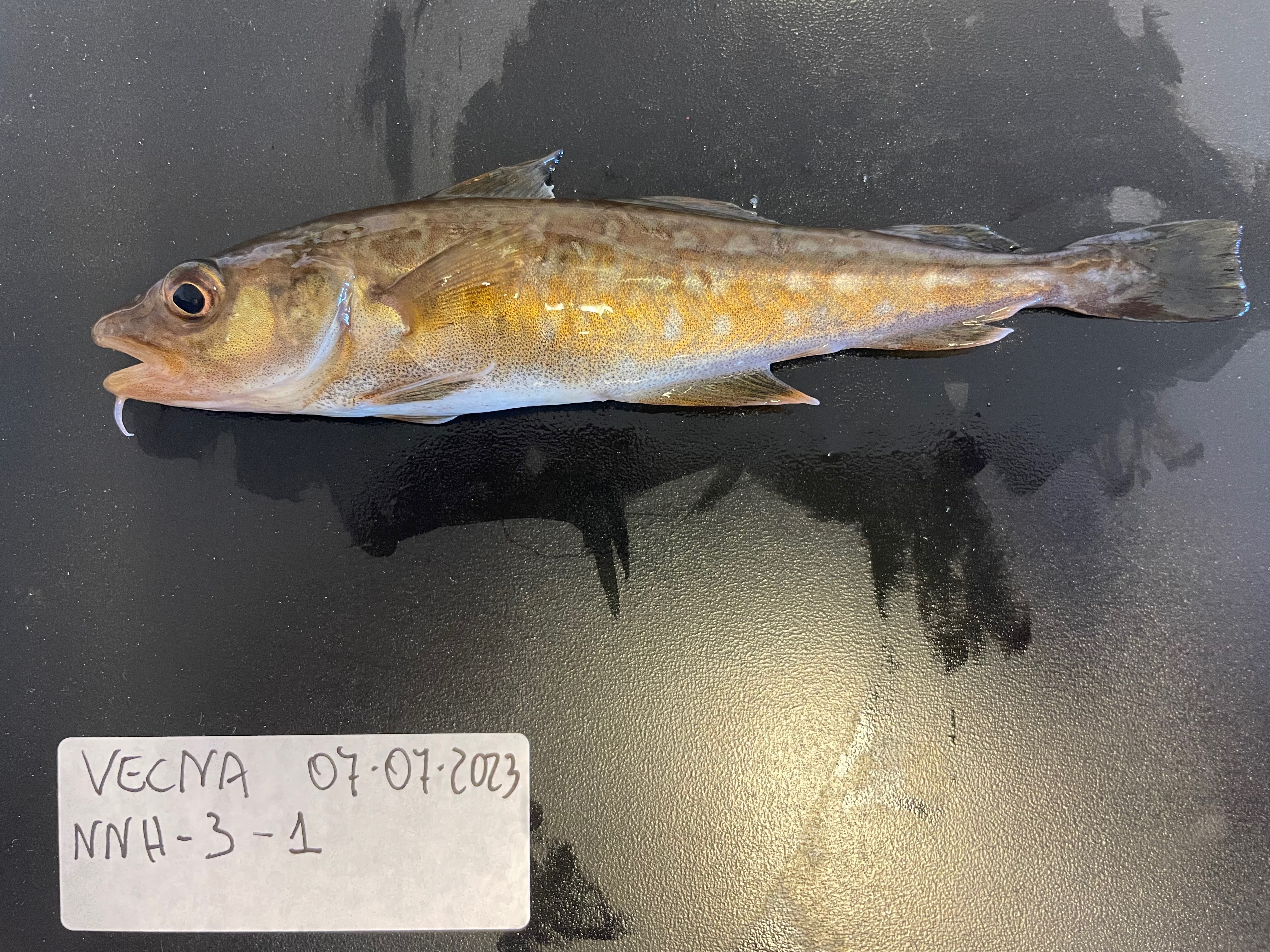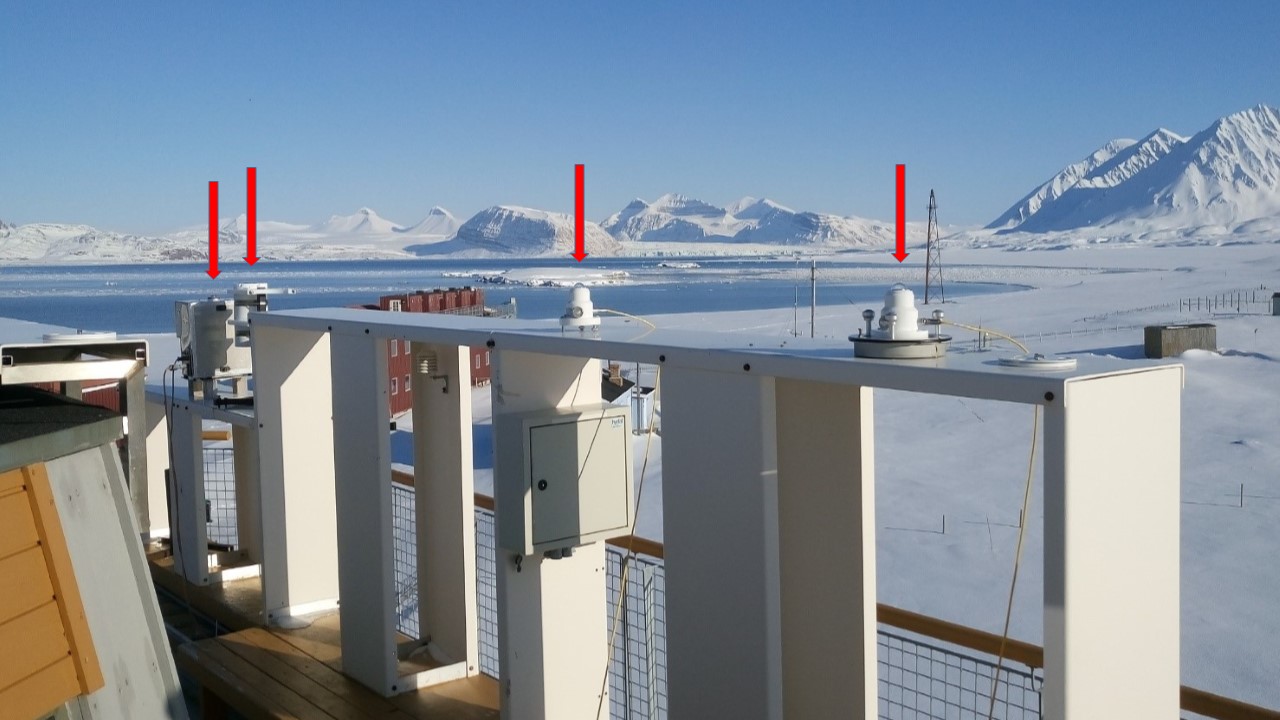Ecosystem and biodiversity
Type of resources
Available actions
Topics
Keywords
Contact for the resource
Provided by
Years
Formats
Representation types
Update frequencies
status
Scale
-

Chronobiology of polar organisms (Chronopolar) Monitoring water parameters in surface and deep (3.0 meters) using DS18B20 + rasberry-pi. Sample collection: Lepidurus arcticus.
-

Observing earth critical zone processes in the bayelva basin (CZO@Bayelva) The dataset includes CO2 fluxes measurements during summer period in different area along the transect from CCT to Ny-Alesund airport. The measures are performed using a portable accumulation chamber in dark (Ecosystem respiration, ER) and light (Net Ecosystem Exchange) condition. For each plot, about 20 measures are performed, including soil temperature and volumetric soil water content. CO2/H2O daily average values and standard deviation. Each measurement day contains a number of half-hour measurements.
-

DOC fractionation: dynamic of POPs and trace metals Arctic DOC (ArcticDOC) The sampling design is projected to cover almost five sampling points in the Kongsfjorden. The sampling of surface water (approximately 100 liters for each sampling point) and sediment are aimed at the determination of persistent and emerging contaminants: POPs PFAS, CUPs, PPCPs, endocrine disruptors such as nonylphenols and bisphenol A. At the same time, with tangential-flow ultrafiltration, dissolved organic matter (DOM) will be characterized according to size fractions (colloidal and truly dissolved) and the distribution of contaminants associated to these fractions will be evaluated.
-
The dataset includes the sediment and biota sampling point in Svalbard Archipelago, along Krossfjorden and Kongsfjorden. Sediment was sampled with the grab from the MS-Teisten (Kings Bay) while amphipods were sampled from the coast with nets (Polar Circle - NPI).
-

Cyclone Sample collection Teams collect two weekly 24-hour samples Teams create metadata by scanning QR codes on cyclone sampler and sample vial with Lifeplan app Teams store samples until shipment in a freezer - Sample shipping to Sweden - Sample cleaning by Lifeplan - Sample shipping to Guelph - Sample sequencing - Transfer of sequencing data to Lifeplan - Bioinformatics - Species lists Through LIFEPLAN, we aim to establish the current state of biodiversity across the globe, and to use our insights for generating accurate predictions of its future state under future scenarios. In LIFEPLAN, we thus characterize biological diversity through a worldwide sampling program, and develop the bioinformatic and statistical approaches needed to make the most out of these data.
-

Carbon flux and its isotopic signature in arctic regions under climate change (CarIsoA) Study carbon flux by evaluating CO2 assimilation on target species. Parameters: Light curve, CO2 curve and temperature curve for on Salix polaris, Saxifraga cespitosa, Dryas octopetala and Carex polaris
-

Observing Earth critical zone processes in the Bayelva basin (CZO@Bayelva). Data represents the average values and the corresponding standard deviation of Net Ecosystem Exchange (NEE), Ecosystem Respiration (ER) and Gross Primary Productivity (GPP) obtained from two different sites in the tundra of the Bayelva river basin: One site (named CZ) is located in the vicinity of the Climate Change Tower. The other one (named "Airport") is in the vicinity of the Ny Alesund Airport. Each average value is obtained as a mean over a set of around 20 point measures for each plot and each sampling date. Flux data are complemented by measurements of soil temperature, soil volumetric water content, air temperature and relative humidity, and solar irradiance. CO2 fluxes are measured using a flux chamber and a LI-COR IRGA by means of the Dynamic Flux Chamber method.
-

A long-term climate manipulation experiment has been ongoing since 2014 at the REMUS site (Responses of Microbes in Upper Soil Horizons to Environmental Manipulations). Twenty-four open-top chambers (OTCs) were installed to simulate warmer ground temperatures and increased precipitation. To mimic enhanced rainfall, irrigation is applied twice a year, at the end of June and August. The transparent OTCs create an average ground temperature increase of approximately 1°C in the treated plots. The site is located about 11 Km from Ny-Ålesund at Kongsfjordneset (78.96661°N 11.47576°E) on the Brøgger Peninsula. In total, 48 plots with different plant species have been selected for the study. Of these, 24 are equipped with OTCs, while the remaining 24 are irrigated, with half of the irrigated plots also containing OTCs (12 with OTCs, 12 without). The REMUS site is registered on the Research in Svalbard Portal under ID 6921. This site is part of the International Tundra Experiment (ITEX), a global research initiative aimed at understanding the responses of tundra plant species through simple manipulation and transplant experiments conducted across multiple Arctic and alpine sites.
-

The aim of this project is to detect the presence of NIMS and door knocker species in marine coastal waters of Svalbard by using a traditional fishing system (traps) and complementary multi-approach monitoring techniques (underwater cameras, hydrophones, plankton net and eDNA collectors) to find all elusive or cryptic species and those present at low density.
-

The main goal of the UV-ICARE project was to establish a network of UV-monitoring stations on Svalbard, which is optimally coordinated and homogenised. This implies harmonization of operational routines, data analysis and storage, including a thorough instrument inter-comparison. The latter was a central element of activities. In the inter-comparison campaign that took place in Ny-Ålesund from 17 to 23 April, 2018 participated (from left to right in the photo): 1.Narrow-band filter radiometer UV-RAD, managed by the Institute of Polar Science at the National Research Council, Italy (CNR-ISP). The instrument measures the erythemally weighted solar UV irradiance (UVE) and ozone column at Ny-Ålesund. 2.Filter GUV radiometer, produced by Biospherical Instr., operating under responsibility of the Norwegian Institute for Air Research (NILU). The radiometer provides solar UVE irradiance and ozone column at Ny-Ålesund. 3.Kipp & Zonen UVS-AE-T radiometer that measures UVE irradiance and operates at Hornsund station under responsibility of the Institute of Geophysics at the Polish Academy of Sciences (IGF-PAS). 4.Kipp & Zonen UVS-E-T radiometer that also provides solar UVE irradiance and works at Longyearbyen station, under management of Masaryk University (MU), Brno and University of South Bohemia (USB), Czech Republic. 5.Brewer #050 spectroradiometer (shown in the second picture) that provided UVE irradiance and ozone column as a reference instrument. The devise operates at Ny-Ålesund under responsibility of CNR-ISP. The inter-comparison resulted in very good agreement (±5 %) of the instruments involved, over most of solar zenith angles and weather conditions sampled, despite different technical specifications. On the basis of this campaign, it can be stated that all measurements in Ny-Ålesund, Hornsund and Longyearbyen are directly comparable at solar zenith angles < 80°. Partly funded by Arctic PASSION project (agreement number 101003472).